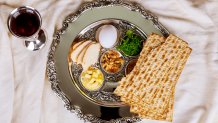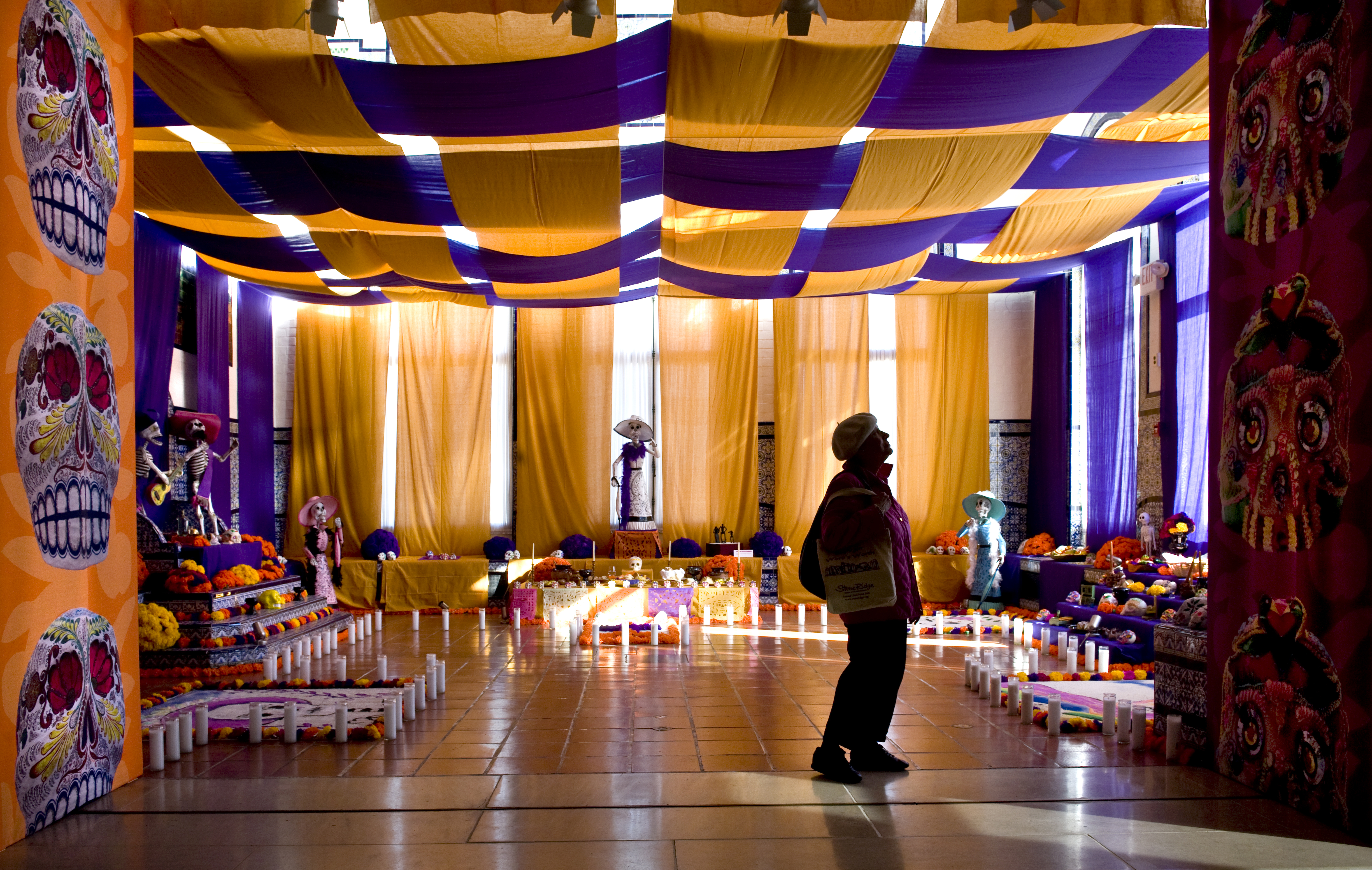Spring is upon us, which means Passover is almost here.
According to Jewish Voice, the spring holiday is the second most important Jewish holiday of the year. Passover, or "Pesach" in Hebrew, is eight-days long (or seven in Israel) and is celebrated by Jews around the world to commemorate their freedom from slavery in ancient Egypt.
During the first two nights, a traditional Seder meal is hosted. At the Seder, a book called the "Haggadah" is recited to recount the Jewish people's exodus from Egypt to the promised land.
"The seder is all about stimulating the curiosity of everybody to ask questions, and thereby keep the tradition alive and cultivate love," Rabbi Benny Berlin from Bachurei Chemed (BACH Jewish Center) in Long Beach, NY, tells TODAY.com.
It's also customary during the eight days of Passover to refrain from eating leavened grain, including foods that contain traces of wheat, barley, rye, oats and spelt. Instead, matzah, or unleavened bread, is eaten.
Curious to know why this is? Keep reading to learn more about the history of Passover, how it's celebrated and when you should celebrate this year.
Get Tri-state area news delivered to your inbox. Sign up for NBC New York's News Headlines newsletter.
When is Passover in 2023?
Holidays
From gift guides to local events, we're here to help you celebrate in style
This year, Passover begins Wednesday, April 5, at sundown and ends Thursday, April 13, at sundown.
While the date in the English calendar changes each year, the holiday always falls on the 15th day of the Hebrew month of Nissan through the 22nd.
What is the meaning of Passover?
According to the Book of Exodus in the Torah, the Jewish people were enslaved in Egypt and subject to intense labor by Pharoah. When God caught wind of this, he sent Moses to Pharoah to free the Jews. Moses asked Pharoah to let his people go, but Pharoah refused, causing God to send down plagues.
For the last of the ten plagues, God asked the Jews to offer a lamb or goat and smear its blood on their doorposts as a way to show that their house was Jewish. Then God went through all the houses and killed the first-born son of every Egyptian house, purposely passing over the Jewish homes. In Hebrew, Passover is called Pesach, meaning "to pass over.”
This last plague pushed Pharoah over the edge. And so, he decided to set the Israelites free. Since they wanted to leave before Pharoah changed his mind, they didn’t have time to wait for their bread to rise. (Hence why Jews eat matzah and refrain from eating leavened bread on Passover.)
From there, the Israelites wandered in the desert for 40 years before going to Mount Sinai.
How Passover is celebrated today
The Passover Seder
It's customary for a Seder (Hebrew for "order") meal to be held on the first two nights of Passover.
“The Seder starts off with the ritual blessing on the wine, and then ends with the conclusion that the next year should be in Jerusalem,” Berlin says, adding that a traditional Seder includes 15 steps.
Passover Seder includes reading the Haggadah (which recounts the Jewish people’s exodus from Egypt to the promised land), drinking four cups of wine, singing and eating symbolic foods. During the meal, the children recite the four questions, which all aim to answer the overarching question: What makes this night different from all other nights?
- On all nights we need not dip even once, on this night we do so twice?
- On all nights we eat chametz or matzah, and on this night only matzah?
- On all nights we eat any kind of vegetables, and on this night maror?
- On all nights we eat sitting upright or reclining, and on this night we all recline?
"During the Seder there is also a hiding of the matzah called the Afikoman which is basically again another way to engage the interest and excitement of children," Berlin says. "A piece of the matzah is hidden and then once it's found and there's a prize for those who find it."
At the meal a dish called the Seder plate is placed on the table. "The Seder plate itself is filled with rituals and filled with symbolism," Berlin says.
There are six foods on the plate each with a different meaning.

- Matzah represents the unrisen bread.
- Zeroa (shankbone) represents the lamb that was sacrificed on the eve of the exodus from Egypt.
- Beitzah (egg) represents a pre-holiday offering that was brought to the temple.
- Maror and Chazeret (bitter herbs, often horseradish) represents the bitterness of slavery.
- Charoset (a traditional Jewish dish made of apples, pears, nuts and wine) represents the bricks made by the Jews as slaves.
- Karpas (vegetables) represents the hard work of the Jews as slaves.
Aside from the Seder plate, people munch on other beloved dishes, everything from matzah ball soup to brisket.
One of the final Seder steps is pouring a fifth cup of wine and opening the door for the prophet Elijah.
"There's four cups of wine that are drunk at the Seder throughout the various different parts of the Seder and then there's one cup left for Elijah, the prophet, to symbolize the future redemption," Berlin explains.
No Chametz
During Passover, it's also customary to give up any leavened grain including food or drinks that contains traces of wheat, barley, rye, oats or spelt. Chametz, as it's called, refers to any food that has not been completely cooked within 18 minutes after coming into contact with water.
Yes, that means you can’t eat your favorite cake, cookies or bread for the duration of the holiday, but there are so many alternatives you can make with matzah.
"There are some people who hold a little bit more stringently when it comes down to legumes so everything from like corn starch and things like that," Berlin says.
"Some people, traditionally those from more of a Sephardic, which means Mediterranean custom eat legumes whereas people from the Ashkenazi, or the European custom, traditionally don't," he adds.
Why is Passover important?
Since Passover commemorates the emancipation of the Israelites from slavery in ancient Egypt, it’s a holiday of celebration, rejoice and remembrance.
"Passover is important because it's all about passing on our tradition to the next generation," Berlin says, adding that many people use this time to connect "their suffering and their pain with the suffering that the Jews went through in their Egypt."
In many ways, it's a time when the past, present and future meet. "It's a powerful tradition of connecting with the Jews in the past, how they suffered and were liberated, and then also experiencing whatever suffering you have in your life and how you're liberated today."
This story first appeared on TODAY.com. More from TODAY:



